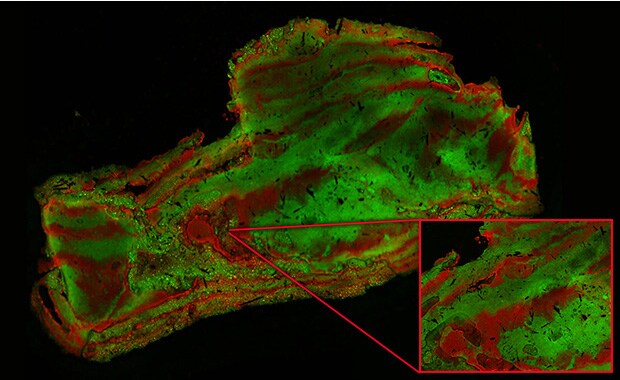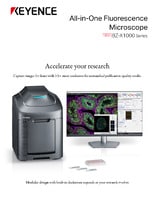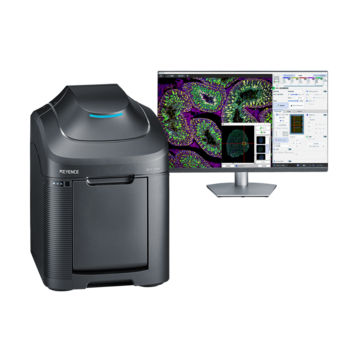Fluorescence Microscopes
Real-time overlay

In food processing, the amount of stirring or mixing is a huge determining factor for taste and texture.
While food ingredients have been conventionally quantified by means of component analysis and other methods, there was no easy way of examining the degree of processing, in particular the degree of mixing of food ingredients. Traditional methods have largely resorted to sensory evaluations.
Get detailed information on our products by downloading our catalog.
View Catalog

Conventional problems
Standard microscopes cannot identify the differences in materials on the basis of the observed images. As such, these microscopes did not allow for any determination on the degree of mixing.
Electron microscopes can observe ingredients at the molecular level, but while the grayscale images can show detailed texture, they do not cater to understanding the degree of mixing.
Using the All-in-One Fluorescence Microscope BZ-X
- The above image shows a cross-section observation of bread (a croissant). Gluten is stained green while oil is stained red. The color-coded visualization enables easy understanding of the layered structure of the croissant. Similarly, you can use fluorescent labeling for additives and other components that you want to observe to easily examine the dispersion and aggregation of these components.
- Conventional fluorescence microscopes required specialized skills for their complicated manipulations. In addition, they had to be operated in a darkroom to observe very weak light. Therefore, training was needed for people who had never used a fluorescence microscope. The poor workability also required many man-hours, thereby ensuring that there were high hurdles preventing the use of fluorescence microscopy. However, the All-in-One Fluorescence Microscope BZ-X can be operated easily by anyone, without a darkroom, for use in regular evaluations.


